

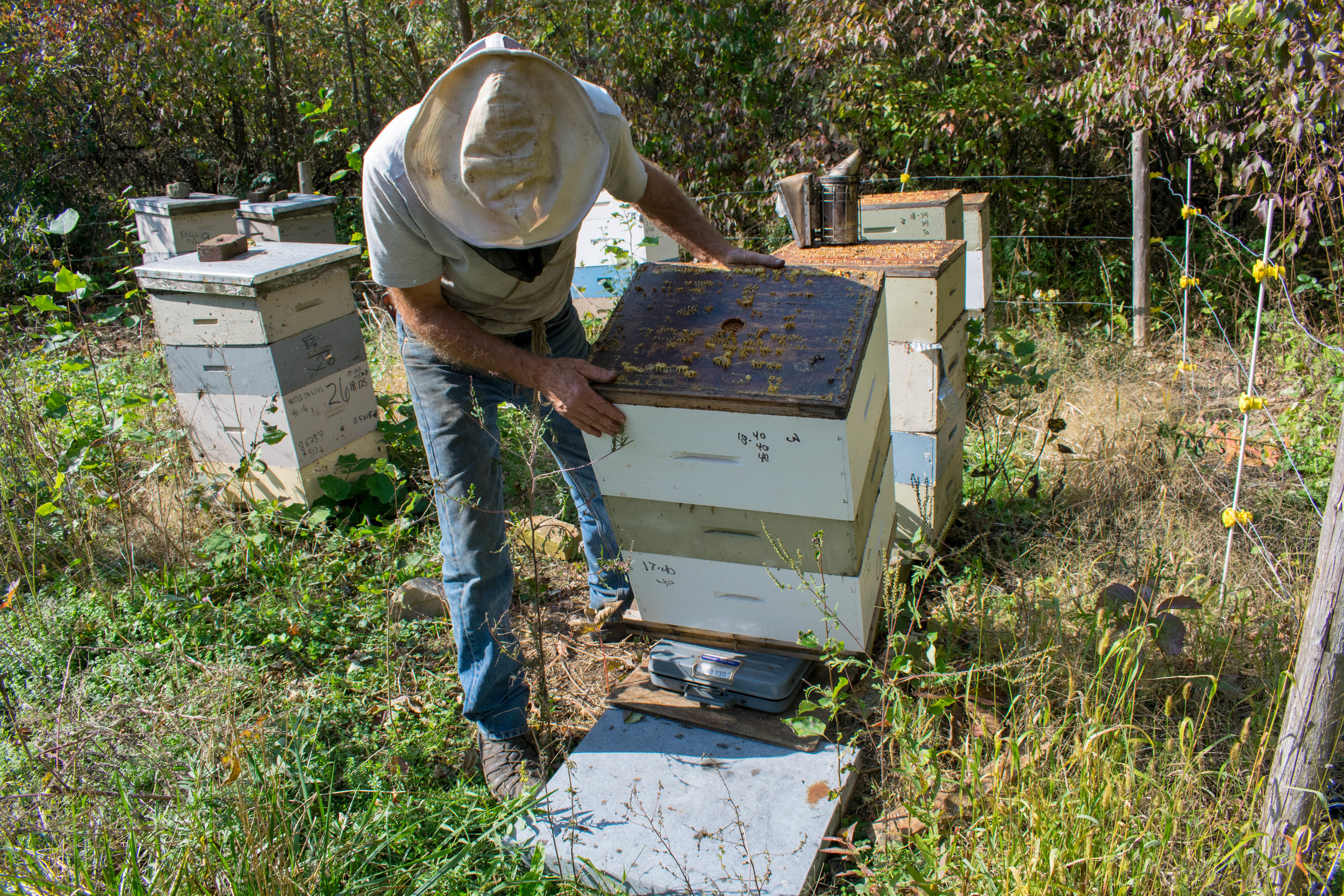
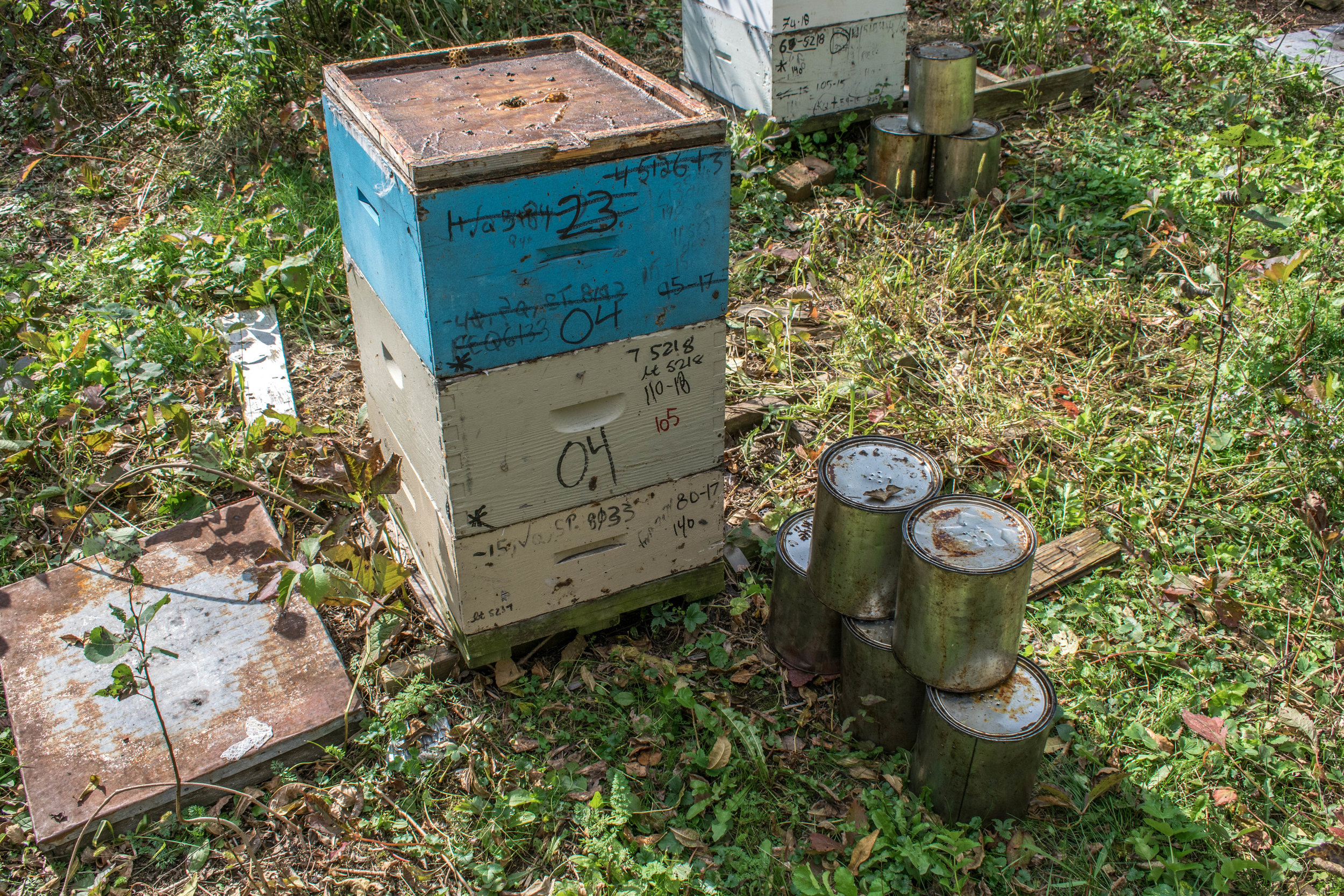
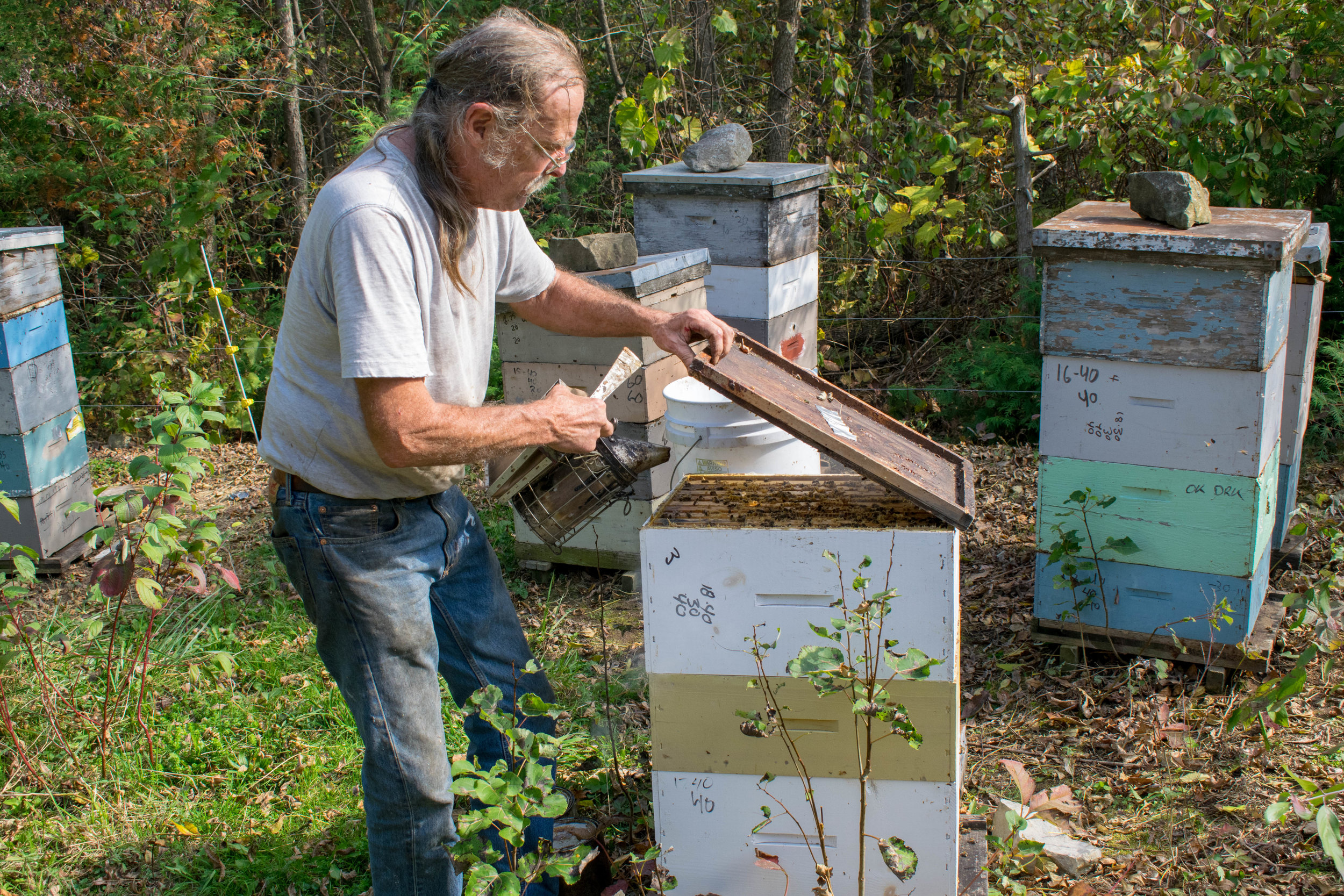

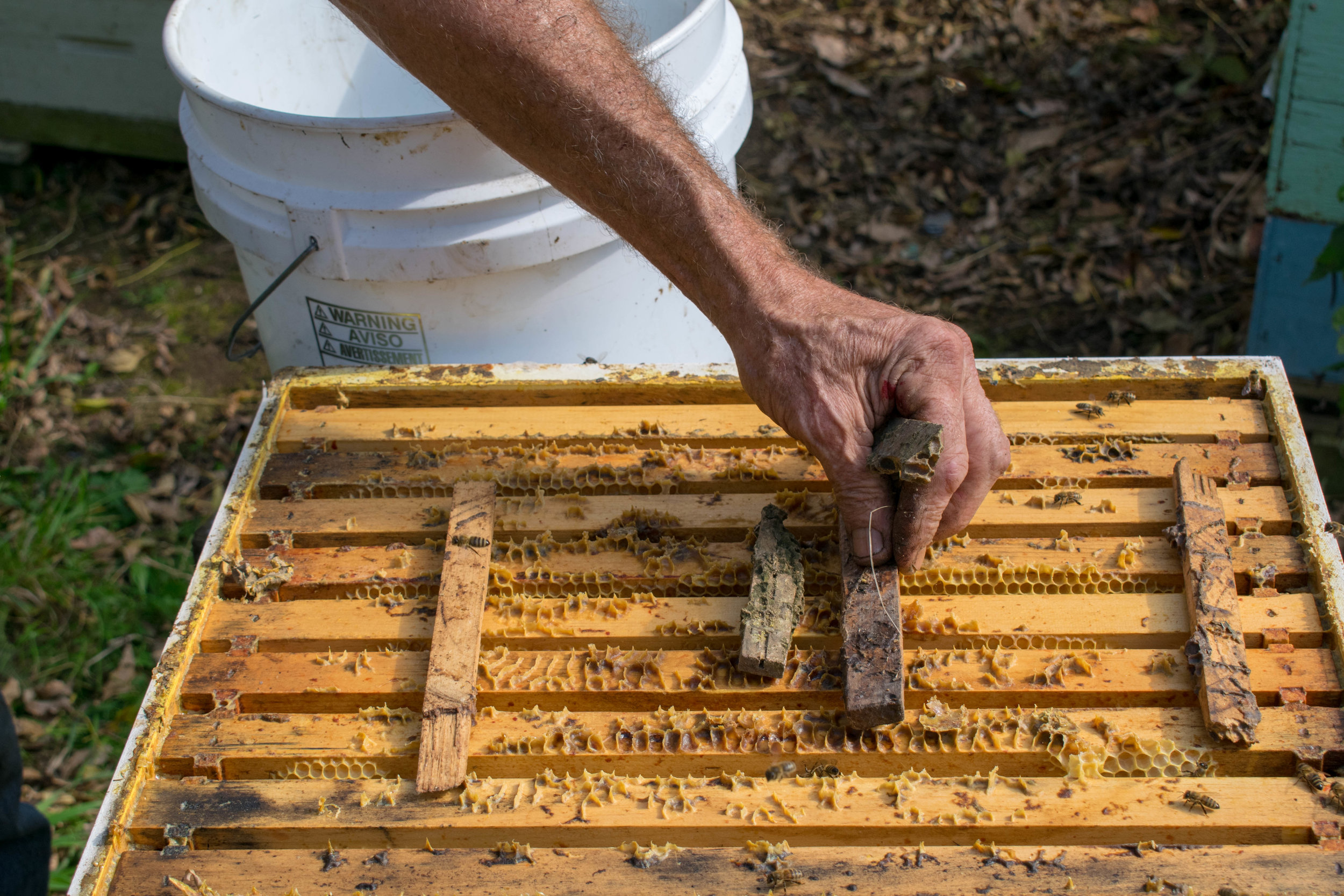


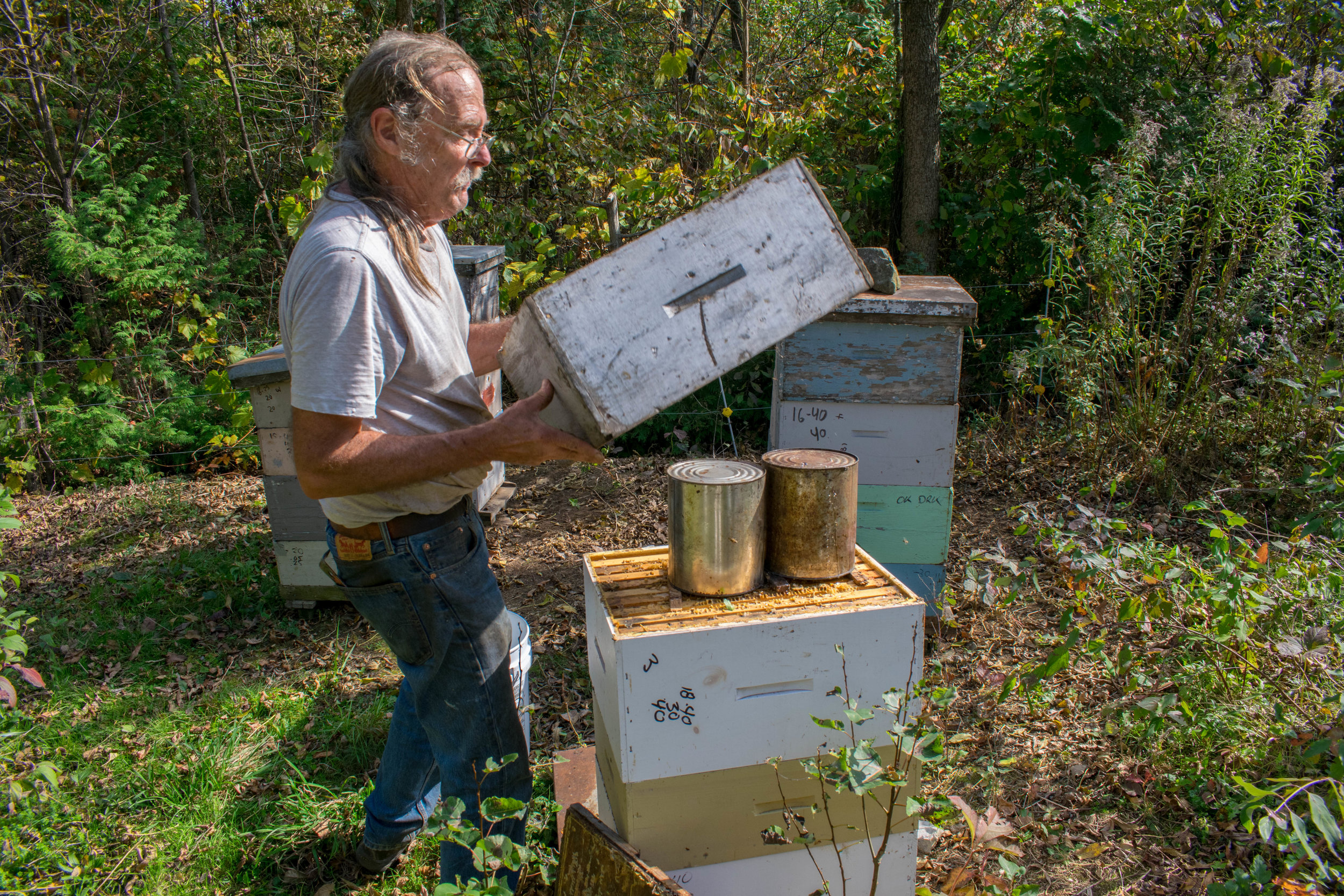
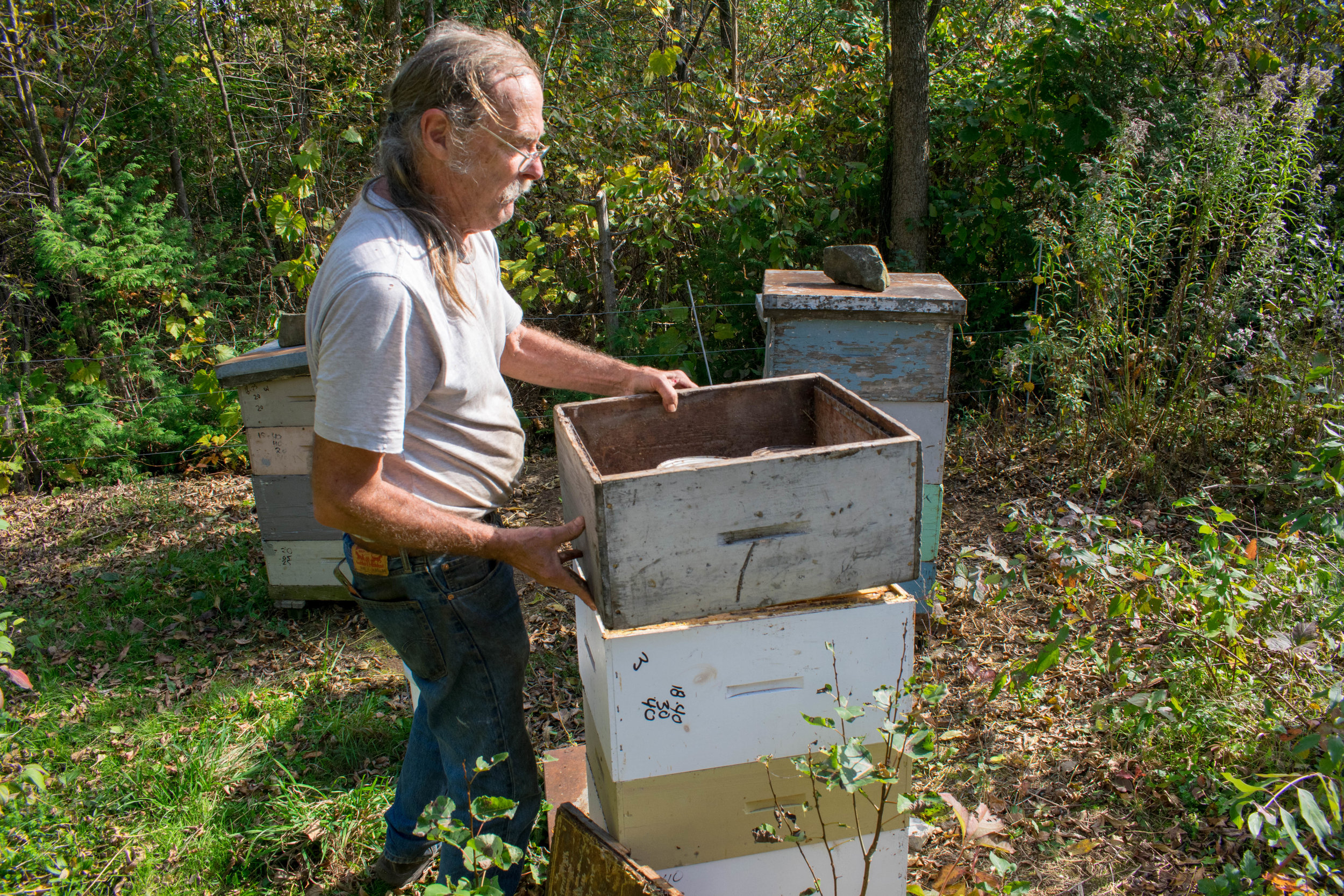

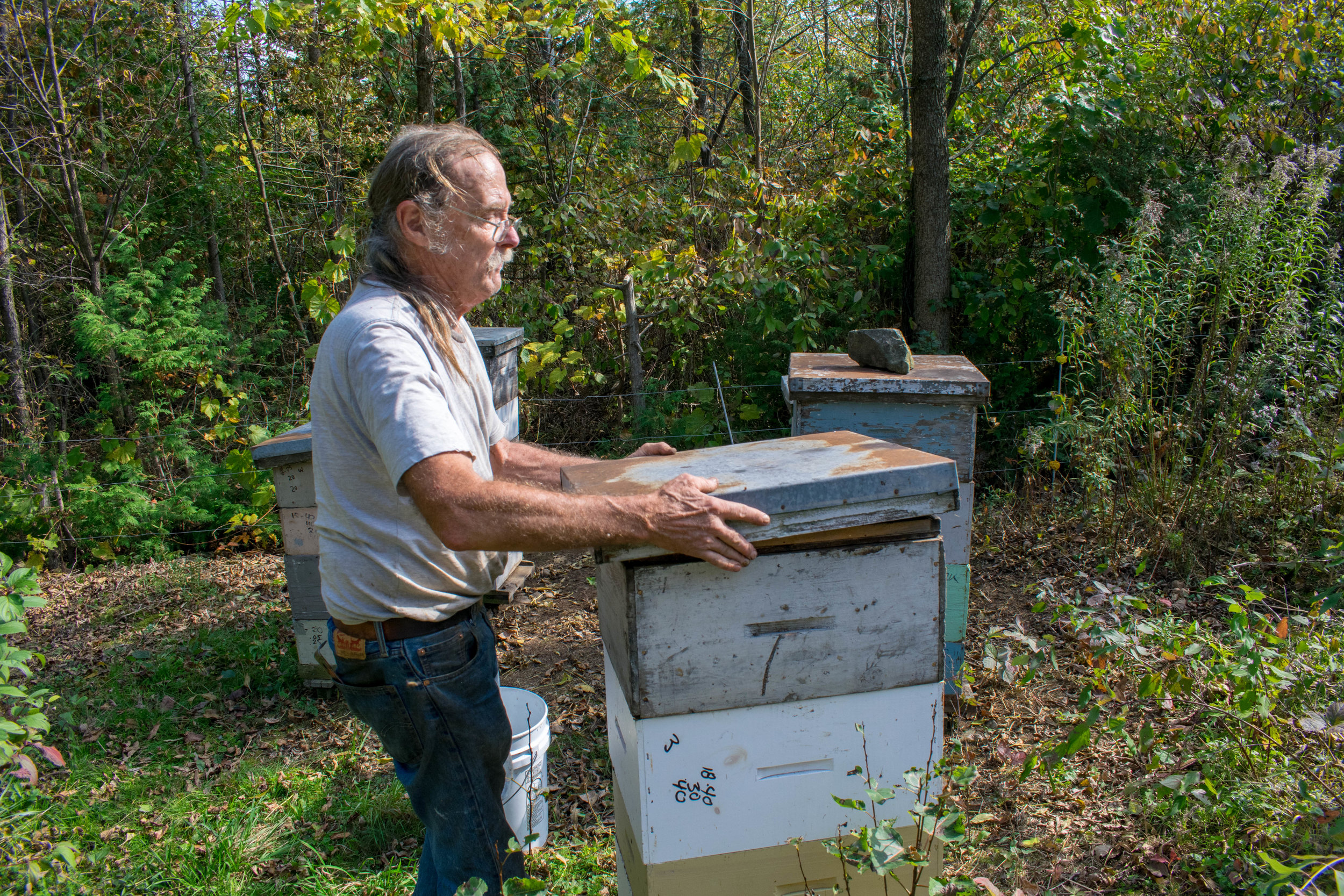


2018 was a great example of the way Mike’s approach can pay dividends. He avoids splitting in the spring, and instead relies on reversing and adding supers early to strong colonies to deal with swarming. This year, our crop came from nectar flows in June. Having supers on strong colonies in the spring meant we had excellent honey crop to extract when Autumn came.
Click (+) in upper right corner of images to enlarge.
All Photos: Adam Foster Collins

Mike’s method of weighing hives.
First, the outer cover is removed and placed next to the hive stand. A utility scale is placed on the cover. Then the hive is tipped and the scale is slid under the upturned edge of the hive.

Next, the hive is tipped onto the scale and the weight is noted. Colonies consisting of two deeps and a medium (Mike’s standard) should go into winter weighing 155 lbs.

A light colony in the fall needing 50 lb. of feed to reach target weight. 5 cans of sugar syrup are placed next to the hive to be fed. Notice the information on the back of the hive. Hive number 04. On May 21, 2018 the colony had seven frames of brood. The colony made 110 lb. honey for 2018, and weighed 105 lb. in September.

Mike’s method of feeding step 1: The covers are removed and lightly smoked to move the bees down off the top bars.

Step 2: small ‘shims’ are placed across the bars. These keep the cans up and allow bee space under them.

Step 3: The cans of syrup (in this case 2, as the hive requires 20 lbs) are placed on the sticks. The bees have room to come up to feed in the space the sticks provide.

Step 4: A ‘feeder super, and empty hive body, is placed over the cans to close them in and keep robbers out.

Step 5: The covers are replaced.
This method allows the bee cluster to warm the syrup and facilitate feeding. This allows us to put specific feed amounts into individual colonies in order to reach specific target weights.

Mike at Berthiaume 2 yard, counting colonies before winter. Many of our mating nucs are wintered here.